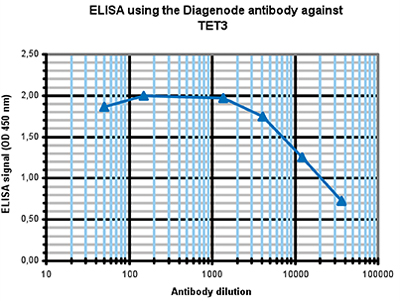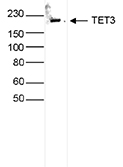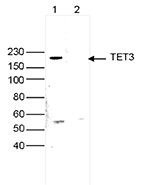TET3 (UniProtKB/Swiss-Prot entry O43151) is a member of the ten-eleven translocation (TET) gene family which play a role in the DNA methylation process. It catalyzes the conversion of the modified genomic base 5-methylcytosine (5mC) into 5-hydroxymethylcytosine (5hmC) which is the first step in demethylation of the DNA. TET3 may therefore play an important role in gene activation and plays a key role in epigenetic chromatin reprogramming in the zygote following fertilization. Diseases associated with TET3 include acute myeloid leukemia.





